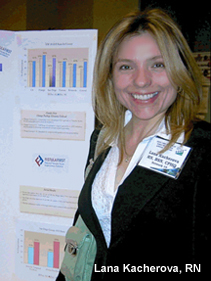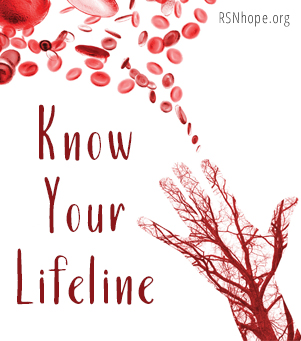Dialysis is a life-sustaining treatment and whether you choose hemodialysis or peritoneal dialysis, the success of your treatment largely depends on safe dialysis access.
There are different dialysis types depending on the modality you choose to treat your kidney insufficiency. If you are active during the day, then peritoneal dialysis (also known as PD) may be the most suitable treatment modality for you. You can do your treatments in the privacy of your own home. Most people choose to do it at night using a special Cycler machine. If you are not a candidate for PD, then hemodialysis (also known as HD) is another treatment option. You can either go to an outpatient center three times a week or do it at home. During hemodialysis, your blood travels through a special filter that resembles a function of the kidneys by removing toxins, waste, and extra fluid from your body.
Hemodialysis Access
For hemodialysis, there are three types of vascular accesses, each of them created surgically:
- Arterio Venous Fistula (AVF): surgeon uses your own veins to create a vascular access under the skin. Fistulas are considered the “gold standard” of vascular access because they last longer and clot less, but they need at least three months to mature
( become usable.) - Arterio Venous Graft (AVG): surgeon places a specially-made bio-compatible plastic tube under your skin and connects it to your own blood vessels. Traditionally AV grafts could be used in 10-14 days, but with new advances, some grafts can be used the day after the surgery.
- Central Venous Catheter (CVC) – a special plastic tube placed into your neck and tunneled into the right atrium of your heart, with the lumens still located outside of the body. CVCs are the fastest way to offer hemodialysis, but they are not considered safe in the long run and they may lead to serious complications if left in one’s body for longer than 90 days.
There are a limited number of places in the body where an access can be placed (the arms, legs, neck or chest), and proper access care is essential for patients to preserve longevity of vascular access.
Tips to prevent vascular access complications:
- Wash your fistula or graft site prior to initiation of every dialysis treatment – each center must have a designated sink to do that. Besides cleaning it yourself, make sure your nurse or technician also cleans it with special disinfectant prior to placing the needles.
- Avoid wearing tight clothes, jewelry, or carrying heavy bags around your vascular access, or sleeping on top of it – this may restrict blood flow and create clotting of your access. During your blood pressure check, make sure the cuff is placed on your non-access arm
- Get familiar with your vascular access by checking it every day: feel the “thrill” – vibrations sensation, and listen for the familiar sound of the bruit, the whooshing sound. If it sounds or feels differently, or you are not able to feel or hear either, don’t wait until your next trip to the dialysis center – call your health care team immediately.
- Always examine your vascular access site for signs and symptoms of infection. If there is any redness, swelling, numbness, hot to touch feeling, itching, or fluid drainage around the vascular access, or you experience fever or chills, contact your healthcare team right away.
- If you have a Central Venous Catheter (CVC), don’t get your dressing wet between treatments; your nurse will be checking the exit site when performing CVC care every time you receive treatment. Ask your nurse how to change the dressing yourself in case of emergency and have an extra set of supplies at home.
- Remember, a CVC is a temporary vascular access and you are at increased risk for infection. Talk to your health care team about creation of permanent vascular access.
- Ask your doctor or dentist for a prophylactic use of antibiotics before you have any dental procedures, because during the procedure bacteria from the oral cavity may enter the blood stream and cause harm to your vascular access.
Peritoneal Access
Even though majority of people with kidney failure receive hemodialysis, there are more and more of you that try to do Peritoneal Dialysis treatments. This treatment modality is a more natural way to remove toxins from the body because it uses your own peritoneal membrane as a natural filter, and it preserves your residual kidney function if there is any left. Just like kidneys work around the clock cleaning blood and producing urine, the peritoneal membrane filters body fluids in a similar way. This seems gentler to the body compared with hemodialysis, where toxins are removed aggressively during 4-hour sessions.
There are certain criteria for PD patients and the home environment that has to be cleared prior to PD catheter placement. Therefore, your health care team conducts a home visit to ensure that the home environment is suitable for PD treatments. Sometimes only slight modifications are necessary, and your health care team will guide you on what needs to be changed.
Peritoneal dialysis access is created surgically: the surgeon places a PD catheter inside your peritoneal cavity and leaves the “exit site” outside of the body, normally below the belly button to the right or to the left, depending on your anatomy and/or preference. Sometimes the exit site can be located much higher than belly bottom – this is called pre-sternal PD catheter. The most common complication from a PD catheter is infection – it could be either an exit site infection or peritonitis, which could lead to the catheter loss, therefore each person on PD must learn how to recognize the early signs.
Tips to prevent PD catheter infections:
- After new PD catheter is placed, you will be given instructions by your surgical team and asked to come back in a week or two. Normally, you should leave the dressing unchanged for that period of time and you cannot take any showers or baths. It is important to let the exit site heal without it being compromised.
- Your PD nurse will teach you proper catheter exit site care as well as how to secure it properly in one place so it does not get pulled or shifted under your clothes. There are special “Belts” on the market specifically designed to wrap about the PD catheter to keep the exit site secured.
- Your PD nurse will also teach you how to perform daily exit site care and which disinfectant agents and sometimes antibiotic creams to use.
- Avoid bacterial contamination by not swimming in fresh water such as lakes, ponds, and rivers. Swimming in your own chlorinated pool or ocean may be OK – ask your PD nurse about this and how to clean your exit site immediately after the swim.
- Avoid taking baths or soaking in a hot tub, unless you have a pre-sternal PD catheter and the water line is far below the exit site so the dressing remains dry (check with your PD nurse first!).
- Prophylactic antibiotic use prior to dental procedures is also recommended for PD patients.
Take Away Points:
Dialysis Access is your lifeline and you are the Most Valuable Player (MVP) on your team. Infection could become a serious health problem affecting other organs or systems in your body well beyond your vascular access. Daily access assessment and care is essential to prevent complications and prolong the life of your access. Remember that communication is the key. If you experience serious symptoms at night when your health care team is not available, go to the nearest hospital Emergency Department or call 911 if necessary. You are in charge of your own body and your health. The health care team is there to support you.
 About the Author
About the Author
Lana Kacherova, RN, BSN, MPH, CNN, CPHQ has been working in the dialysis industry since 1993 in different capacities, taking care of people with kidney disease. She started as a dialysis technician, then became a nurse, later transitioned to clinical coordinator of a hemodialysis unit, quality improvement professional, and case manager. While working full-time, Lana attended California State University Northridge, and received a BS degree in Nursing and Master of Public Health in Health Education. She recently joined Kaiser Permanente of Southern California as a Renal Case Manager.
Web ID 4001







